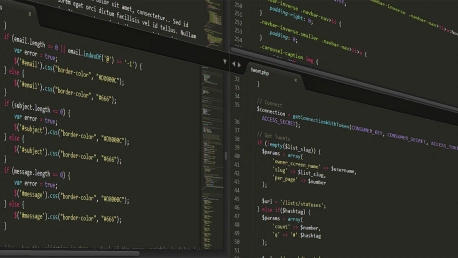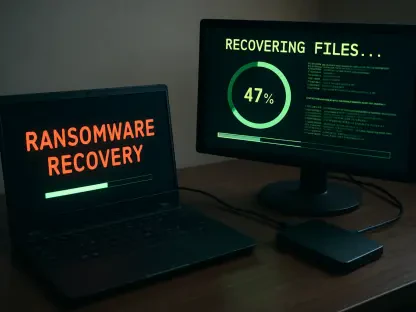In July, Microsoft, Adobe, SAP, Fortinet, Citrix, and Google collectively released a series of critical patches aimed at addressing a myriad of vulnerabilities affecting millions of users worldwide. The urgency of these updates cannot be overstated as several vulnerabilities are being actively exploited. This article delves into the specifics of these patches, highlighting the vulnerabilities they address and the proactive measures organizations can take to enhance their cybersecurity posture.
The Significance of Microsoft’s July Patch Tuesday
Microsoft’s July Patch Tuesday introduced a staggering number of updates, addressing over 130 Common Vulnerabilities and Exposures (CVEs). Among these, at least two have been identified as actively exploited. One critical vulnerability patched is CVE-2024-38080, a Windows Hyper-V elevation of privilege flaw that poses a significant risk as it allows attackers to gain increased system privileges. Given its 7.8 CVSS rating, the threat is acute, allowing for potential ransomware attacks.Another critical flaw addressed is CVE-2024-38112 in the Windows MSHTML platform, carrying a 7.5 CVSS score. This vulnerability relies on user interaction to execute a malicious file, making user education just as important as the technical fix. Although this issue requires user intervention, the implications of sensitive data exposure are severe and demand immediate attention from system administrators.Microsoft also addressed multiple Remote Code Execution (RCE) vulnerabilities, particularly CVE-2024-38074, CVE-2024-38076, and CVE-2024-38077 in the Windows Remote Desktop Licensing Service. Rated critically at 9.8, these vulnerabilities allow unauthenticated users to execute malicious code merely by sending a corrupted message to an affected server. To mitigate these threats, it’s crucial to ensure that these servers are not accessible over the internet and to audit for unnecessary services that could expose an organization to attack.
Patching Efforts by Adobe and SAP
Adobe’s updates in July focused on several critical vulnerabilities across their product suite. For instance, CVE-2024-34123 is a significant flaw in Adobe Premiere Pro that could lead to arbitrary code execution. Additional critical issues were discovered and patched in InDesign, such as CVE-2024-20781 through CVE-2024-20785, illustrating potential system compromises via memory leaks. These vulnerabilities in key Adobe products emphasize the importance of timely updates to prevent unauthorized access and system breaches.SAP’s updates included a vital security note, #3483344, which addressed a missing authorization check vulnerability in SAP Product Design Cost Estimating. This issue carries a CVSS score of 7.7, allowing remote attackers unauthorized access to generic table data, posing substantial confidentiality risks. The focus on data security within enterprise solutions like SAP highlights the critical nature of addressing vulnerabilities that could lead to significant data breaches. Organizations using SAP must ensure immediate application of these patches to safeguard sensitive business information.
Fortinet and Citrix: Focus on Web Vulnerabilities
Fortinet’s updates addressed cross-site scripting (XSS) and IP blocklist bypass vulnerabilities within their web SSL VPN UI. Specifically, CVE-2024-26006 and CVE-2024-26015 were patched to prevent exploitation through social engineering attacks. These vulnerabilities underline the importance of secure web interfaces, demonstrating how easily a compromised interface can lead to unauthorized actions by malicious actors. Securing these aspects of technology infrastructure is crucial in maintaining robust cybersecurity defenses.Citrix concentrated on fixing privilege escalation vulnerabilities in their Windows Virtual Delivery Agent and Citrix Workspace app, specifically CVE-2024-6151 and CVE-2024-6286. Both were rated high, with a CVSS score of 8.5, and could allow low-privileged users to gain elevated system privileges. This underscores the necessity for strong user permission management, alongside applying robust patching practices to prevent such privilege escalation issues that can jeopardize entire systems.
Android Updates and Google’s Approach to Mobile Security
Google’s Android updates for July addressed 27 CVEs, with CVE-2024-31320 identified as a critical vulnerability within the Framework component. The severity of this flaw lies in its ability to permit local privilege escalation without requiring additional execution privileges, making it particularly dangerous in a mobile environment. Google’s systematic approach to patching these vulnerabilities reflects the broader mobile security ecosystem’s need for constant vigilance and proactivity.Google’s emphasis on addressing these critical vulnerabilities points to an anticipated trend of increasingly sophisticated attacks targeting mobile devices. With millions of Android users worldwide, these patches are paramount in securing both personal and corporate data against evolving threats. Organizations and individuals must apply these updates promptly to minimize the risk of exploitation and ensure data integrity on mobile platforms.
Key Trends in Cybersecurity Vulnerabilities
The recurring themes from these July patches underscore a critical trend of vulnerabilities involving remote code execution and privilege elevation. These types of vulnerabilities pose significant risks due to their potential to completely undermine system security. The possibility of an attacker gaining unauthorized access or executing arbitrary code highlights the importance of maintaining a rigorous patch management process.Another crucial observation is the role of user interaction in the exploitation of certain vulnerabilities. Many patches addressed issues that required user action, such as opening malicious files or links. This highlights the critical need for ongoing user education and awareness programs to combat phishing and social engineering attacks, which remain prevalent threats in the cybersecurity landscape.The wide range of affected products, spanning desktop operating systems to mobile platforms, illustrates that no technology ecosystem is immune to threats. Consequently, a multi-layered approach to security—incorporating proactive patch management, rigorous user education, and constant auditing of systems—is essential for safeguarding against potential exploits.
Best Practices for Utilizing Security Patches
Consistent advice throughout the cybersecurity community emphasizes the necessity for timely application of security patches. Organizations are encouraged to prioritize vulnerabilities that are being actively exploited and carry critical ratings. Additionally, proper segmentation of networks to ensure that servers are not unnecessarily exposed to the internet is crucial in mitigating risks. Audit processes should be in place to identify and disable unnecessary services that could expose an organization to vulnerabilities.Timely patching also involves maintaining a structured and documented patch management process to streamline the identification and application of updates. This process should include regular reviews of released patches, testing in controlled environments, and systematic deployment across all affected systems. By following these best practices, organizations can significantly reduce their attack surface and enhance their overall cybersecurity posture.
Conclusion
In July, major tech companies including Microsoft, Adobe, SAP, Fortinet, Citrix, and Google collectively issued a series of essential patches to address a wide range of vulnerabilities impacting millions of users around the globe. The pressing nature of these updates cannot be overstated, as some of the vulnerabilities are actively being exploited by malicious actors.This article delves into the details of these patches, shedding light on the specific vulnerabilities they target and discussing the proactive measures organizations can adopt to boost their cybersecurity defenses. For instance, Microsoft’s updates tackle critical flaws in their Windows operating system, while Adobe has released patches for its widely-used software like Acrobat and Flash Player. SAP addresses vulnerabilities in its enterprise applications, and Fortinet focuses on network security gaps. Citrix offers fixes for its virtualization software, and Google patches issues in its Chrome browser.Beyond just applying these patches, organizations should consider conducting regular security audits, implementing multi-factor authentication, and training employees on cybersecurity best practices. By understanding the specifics of these updates and taking a proactive approach to cybersecurity, organizations can significantly reduce their risk of falling victim to cyber-attacks.









